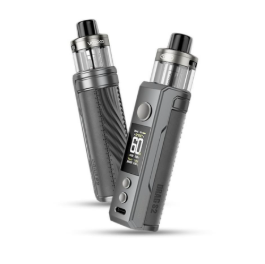The Impact of IoT on Insurance Tech
The insurance industry is undergoing rapid transformation due to emerging technologies. Among them, the Internet of Things (IoT) is having a significant impact. According to Statista, the number of connected IoT devices worldwide reached 15.14 billion in 2023, and is expected to grow to 29.42 billion by 2030. Another report by McKinsey shows that IoT-based data analytics can reduce insurance claim costs by up to 30%.
For any leading IoT App Development Company, the intersection of IoT and insurance presents both opportunities and technical challenges. From real-time risk assessment to automated claims processing, IoT is reshaping how insurers operate. This article explores the deep impact of IoT on insurance technology from a technical and informative perspective.
What Is IoT in Insurance?
IoT in insurance involves using connected devices to collect real-time data about assets, environments, and human activities. This data allows insurers to:
- Assess risks more accurately
- Monitor policyholder behavior
- Automate claim validation
- Offer usage-based premiums
Devices such as telematics units in vehicles, smart home sensors, wearables, and industrial sensors are central to this approach.
Key Applications of IoT in Insurance Tech
1. Telematics in Auto Insurance
Telematics systems collect driving data through GPS, accelerometers, and onboard diagnostics.
Technical benefits:
- Detect speeding, hard braking, and acceleration
- Measure trip duration and time of day
- Transmit data to backend systems for analysis
Example:
Progressive’s “Snapshot” program uses IoT data to offer customized premiums. Drivers with safer habits receive lower insurance rates.
2. Smart Homes and Property Insurance
Smart home devices reduce risks related to fire, theft, and water leaks.
Devices used:
- Smoke detectors
- Smart locks
- Water leak sensors
- Motion detectors
How it helps insurers:
- Real-time alerts reduce claim frequency
- Historical data aids in risk assessment
- Fewer false claims due to sensor data validation
Real-world example:
Liberty Mutual collaborates with smart home providers to offer discounts when users install risk-reducing devices.
3. Wearables in Health Insurance
Wearable devices like fitness bands and smartwatches track health parameters.
Collected data includes:
- Heart rate
- Step count
- Sleep quality
- Activity duration
Insurer advantages:
- Promote healthier lifestyles
- Reduce long-term policy costs
- Provide real-time health monitoring for high-risk patients
Example:
John Hancock’s Vitality program integrates wearable data to adjust premiums based on fitness behavior.
4. Industrial IoT in Commercial Insurance
Businesses use IoT to monitor equipment, environment, and worker safety.
Use cases:
- Monitor vibration, pressure, and temperature of machinery
- Ensure compliance with safety standards
- Detect hazardous gas leaks
Benefits for insurers:
- Identify preventive maintenance needs
- Reduce downtime-related claims
- Optimize commercial risk models
Technical Architecture of IoT in Insurance
A typical IoT insurance system involves the following layers:
| Layer | Function |
| Device Layer | Sensors and actuators collect raw data |
| Network Layer | Transmits data via Wi-Fi, LTE, or LPWAN |
| Data Processing | Filters and normalizes incoming data streams |
| Analytics Layer | Runs ML models for prediction and risk scoring |
| Application Layer | Interfaces with insurance platforms and users |
Each layer must handle vast data volumes with minimal latency and ensure secure data exchange.
Role of an IoT App Development Company
An IoT App Development Company plays a key role in building custom insurance applications. Their responsibilities include:
- Designing sensor integration protocols
- Building scalable cloud-based data platforms
- Ensuring regulatory compliance (HIPAA, GDPR)
- Implementing AI/ML-based risk analysis models
- Creating user interfaces for insurers and policyholders
Such companies must ensure data integrity, real-time processing, and system reliability.
Benefits of IoT for the Insurance Sector
Real-time Risk Assessment
- Provides continuous monitoring
- Detects anomalies early
- Reduces underwriting errors
Improved Claims Management
- Enables automated claim validation
- Lowers fraud with timestamped data
- Speeds up processing with verified inputs
Dynamic Premium Models
- Offers behavior-based pricing
- Aligns policy cost with actual usage
- Encourages safer behavior among users
Enhanced Customer Engagement
- Delivers insights via mobile apps
- Builds trust through transparency
- Provides proactive recommendations
Challenges in IoT Adoption in Insurance
Data Privacy and Security
IoT devices collect sensitive personal and financial data.
Risks:
- Unauthorized access
- Data tampering
- Breach of regulatory standards
Interoperability
Insurers often need to integrate with devices from multiple vendors.
Issues include:
- Data format inconsistencies
- Protocol mismatch
- Versioning problems
High Implementation Costs
Developing custom IoT platforms requires:
- Specialized hardware
- Scalable cloud storage
- Trained development teams
Only a mature IoT App Development Company can manage such complexity effectively.
Case Studies
1. AXA and Telematics
AXA launched a telematics-based auto insurance in Europe. Devices collected real-time driving data. The company reported:
- 25% fewer claims
- Improved customer retention
- More accurate risk profiling
2. Lemonade and Smart Homes
Lemonade uses smart home integrations to validate claims automatically. When a sensor detects a water leak, it triggers an alert. If damage occurs, the system logs the timeline and sends data to their claims platform. Claim processing reduced from weeks to hours.
Future Outlook
IoT will continue to shape insurance technology. Emerging trends include:
- Edge computing for local data processing
- Blockchain to secure data exchanges
- AI-powered analytics for faster decision-making
- Digital twins to simulate insured environments
As device accuracy improves, insurers can reduce claim errors and offer highly personalized products.
Conclusion
IoT is changing the landscape of insurance technology. It enhances risk assessment, automates claims, and personalizes policy offerings. For insurers, the shift means adopting a data-driven approach to decision-making. The role of a capable IoT App Development Company becomes critical in building secure, scalable, and intelligent platforms.
Insurers that integrate IoT effectively will not only reduce costs but also deliver better outcomes for their customers. The combination of connected data and intelligent systems marks a new era in insurance operations.
Frequently Asked Questions ( FAQs)
1. How is IoT used in the insurance industry?
IoT is used to collect real-time data from connected devices like telematics systems, smart home sensors, and wearables. This data helps insurers assess risks, personalize premiums, and process claims more accurately and efficiently.
2. What are the benefits of IoT for insurance companies?
IoT offers several benefits, including:
- Real-time risk assessment
- Faster and automated claims processing
- Reduced fraudulent claims
- More accurate underwriting
- Dynamic, usage-based premium models
3. What are the challenges of implementing IoT in insurance?
Key challenges include:
- Data security and privacy concerns
- High development and integration costs
- Device interoperability issues
- Regulatory compliance across different regions
4. How does an IoT App Development Company help insurers?
An IoT App Development Company designs and develops custom platforms that collect, process, and analyze IoT data. They ensure secure data handling, build scalable cloud infrastructure, and integrate analytics to support insurer decision-making.
5. Can IoT reduce insurance fraud?
Yes, IoT can significantly reduce fraud. Devices provide timestamped, sensor-based evidence, making it harder to submit false claims. Smart homes, telematics, and industrial sensors offer transparent data that insurers can use for claim verification.













